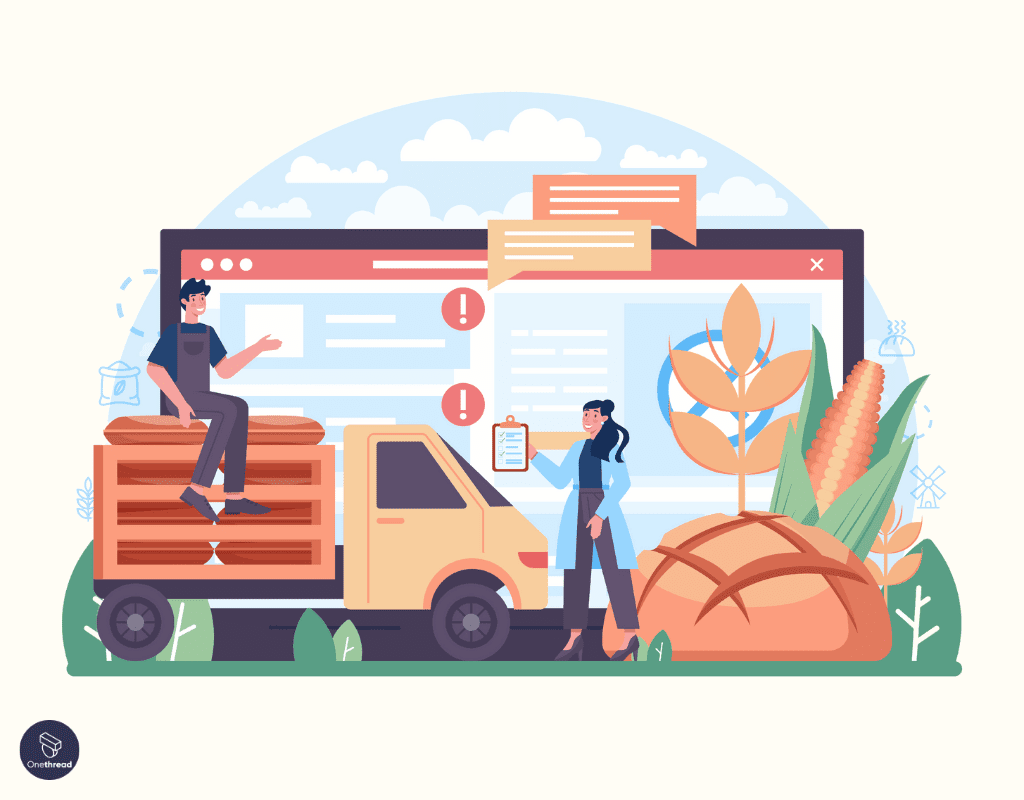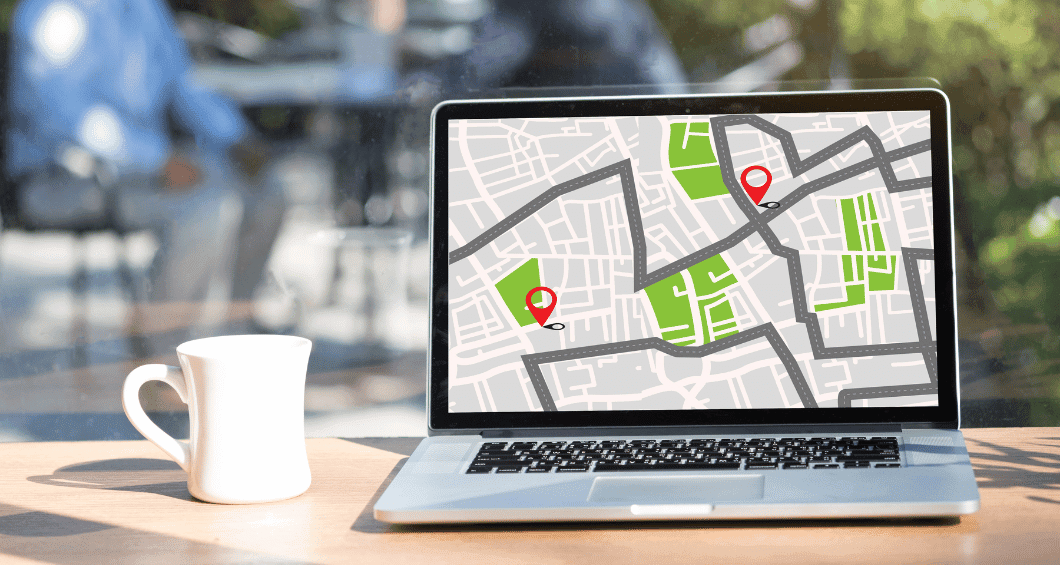There has been a widening gap between many businesses and the physical interactions they have with their customers. It’s a symptom of the digital age, yet one which isn’t necessarily benign.
For instance, if your latest project or product relies on getting tangible goods into the hands of buyers or you offer a service that requires in-person visits, then the logistics of achieving this can get the better of you. And you don’t want to put customer satisfaction at risk of derailment.
This is something that route optimization can solve, so here’s a straightforward guide to what it is, why it’s worth it, and what problems lie on the path to implementation.
The Basics
Simply put, route optimization is about using algorithms and data analysis to determine the most efficient paths for deliveries or services. Whether you’re an e-commerce company or a takeout pizza place, it’s a means of finding the quickest, least costly routes to customers while considering factors like traffic, road conditions, and delivery windows.
Companies leverage advanced software that adapts in real-time, ensuring constant efficiency improvements. Because of this, the market has grown to over $5.69 billion, and looks set to expand continually in the coming decade.
The Benefits

In a logistics context, there’s no better solution to a range of woes and inefficiencies than using a delivery route planner.
Here’s why it matters:
- Cost Savings: By finding the shortest or most efficient routes, you can cut down on fuel consumption and vehicle wear and tear.
- Improved Delivery Times: Faster routes mean quicker deliveries. It can improve customer satisfaction and trust since packages arrive when expected, or even sooner.
- Enhanced Fleet Management: Optimized routes help better manage vehicles, reducing idle time and ensuring more consistent usage across the fleet. This results in lower fuel consumption, reduced maintenance costs, and improved overall vehicle performance, all of which are essential components of an effective fleet maintenance plan.
- Environmental Impact: Fewer miles traveled means lower emissions. Companies can significantly reduce their carbon footprint by optimizing their logistics.
- Increased Capacity Utilization: Efficient routing often translates to more stops per route without overloading drivers or vehicles, maximizing each trip’s productivity.
But there’s more under the hood. Real-time data integration ensures dynamic rerouting based on traffic conditions or new delivery requests, keeping operations agile.
Unsurprisingly, success stories abound. Amazon is the best example, with sophisticated software streamlining its massive delivery network daily. And the good news is that this type of tool is just as widely used by and available to smaller organizations.
Another critical advantage of route optimization is the ability to optimize your delivery routes while simultaneously increasing overall operational flexibility. By leveraging sophisticated algorithms, businesses can not only reduce fuel consumption and vehicle wear but also accommodate unexpected changes, such as last-minute orders or traffic disruptions.
This adaptability helps maintain high customer satisfaction by ensuring timely deliveries, regardless of evolving conditions. Furthermore, optimizing routes enables companies to handle more deliveries or service calls in a single day, increasing productivity and minimizing idle time for drivers. This translates to both cost savings and an enhanced competitive edge
The Challenges

Route optimization sounds ideal, but getting there can be a rough ride. Here’s a rundown of the main hurdles and how to tackle them:
- Data Accuracy: Garbage in, garbage out. Ensuring accurate, up-to-date data on routes, traffic patterns, and delivery points is a must. Invest in high-quality GPS systems and regularly update your databases. If you’re already using business intelligence tools to wrangle information in other aspects of your operations, this should be second nature.
- Integration with Existing Systems: Your route management software needs to play nice with other software (like CRM or ERP systems). Choose solutions known for seamless integration capabilities.
- Scalability Issues: What works for a small fleet might not cut it for a larger one. Make sure your chosen solution can scale as your operations grow without performance lags.
- Driver Adoption: The best system won’t help if drivers resist using it. Offer training sessions and demonstrate how optimized routes make their jobs easier, and potentially safer.
- Real-Time Adjustments: Static plans falter when unexpected issues arise (accidents or sudden weather changes). Use dynamic routing tools that adapt on-the-fly to keep things moving smoothly.
While these challenges are real, they’re far from insurmountable with the right strategies. And once everything is up and running, customer satisfaction will soar, with this last stage of their journey having the potential to boost revenues by 15% on its own.
The Applications Beyond Deliveries

Route optimization isn’t just for delivery drivers. Many industries can benefit from this technology to improve their operations.
Here are a few examples:
Field Service Management
- Maintenance and Repairs: Companies like HVAC services or appliance repairs use optimized routes to schedule technicians efficiently, reducing travel time and increasing the number of jobs completed daily.
- Utility Services: Electric, water, and gas companies send out field workers for meter readings or emergency repairs. Efficient routing ensures quicker response times.
Healthcare Providers
- Home Health Care: Nurses and home health aides rely on optimized routes to see more patients without wasting time in traffic.
- Mobile Clinics: Dental vans or vaccination units that travel through communities benefit from smart routing by maximizing their reach in underserved areas.
Public Safety and Emergency Services
- First Responders: Fire trucks, ambulances, and police vehicles get dispatched via optimized paths to save crucial minutes during emergencies.
- Disaster Relief Efforts: Non-profits coordinate large-scale relief activities using route planning tools for efficient distribution of supplies.
Agriculture
- Crop Monitoring and Management: Farmers use route optimization to plan the most efficient paths for tractors and other machinery during planting, harvesting, or pesticide application. This maximizes field coverage while reducing fuel usage.
Waste Management
- Garbage Collection: Waste management companies optimize routes for garbage trucks to cover large urban areas efficiently, minimizing missed pickups and reducing operational costs. This is especially appealing given that it can keep public sector costs down, so it’s not just a boon for private sector operations.
Construction
- Material Delivery and Equipment Deployment: Construction firms use route optimization to schedule deliveries of materials and transportation of heavy machinery to various sites, ensuring projects stay on track and within budget.
Ultimately, service industries adopting these strategies see not only cost savings but also significant improvements in service quality and customer satisfaction.
So, it’s not some intangible behind-the-scenes change which won’t be noticed by end users, but rather a holistically beneficial shift which is there for the taking.
Final Thoughts
It’s clear that if your business project involves any kind of last-mile logistics, then route optimization is a must for the setup that supports it. Customers will appreciate it, employees will be given a leg up, and cost savings will be unlocked in the long term.
